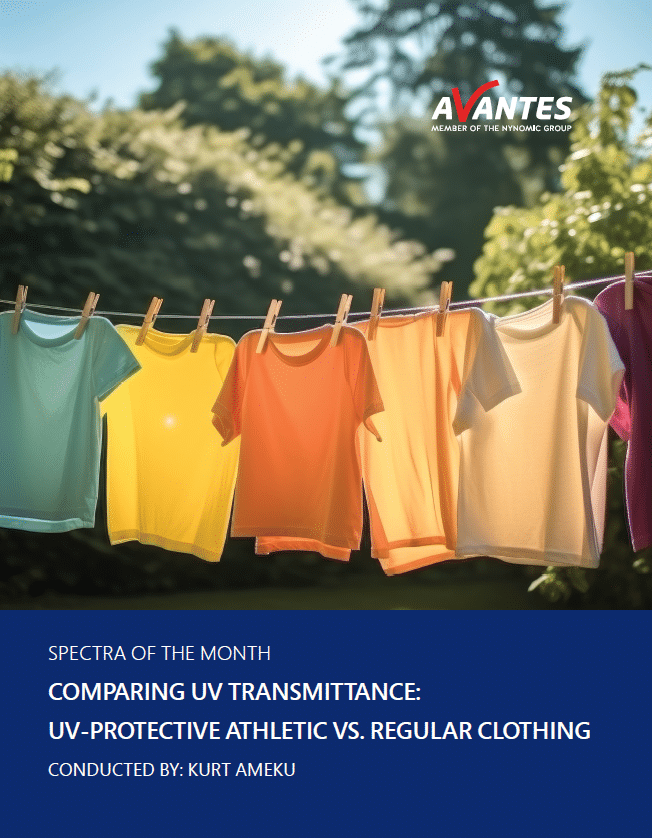Comparing UV Transmittance: UV-Protective Athletic vs. Regular Clothing
 Introduction/Application
Introduction/Application
The start of a new year often comes with New Years Resolutions, many of which pertain to fitness. Advances in health and exercise sciences have only increased our access to healthier, more active lifestyles, including regimented nutrition plans, personalized workout routines, and athletic wear that is designed to protect our body during physical activity. These can include sweat wicking technology, more breathable fabrics, and UV-protective treatments of clothing. UV protection is graded in terms of SPF (sun protection factor) and is given on a number scale that quantifies how many times more effective a covering is at protecting human skin from a sunburn compared to without the product. For example, is human skin starts to sunburn after 10 minutes, a product with an SPF rating of 30 would protect against sunburns for 300 minutes. Many UV-protective clothing lines are rated as SPF50 or higher, providing significant UV protection. Besides advances in UV-coatings, the choice of fabric can be critical in providing UV protection, with materials like cotton providing less protection compared to polyester or nylon.
This experiment aims to determine how effective UV-protective athletic clothing is in blocking UV light compared to clothing with no additional UV-protective coating. A swimming shirt treated with a UV-protective coating was exposed to a UV light, and the opposite side of the fabric was measured to see how much UV light passed through. The resulting spectra were compared to the standalone UV light source to quantify the amount of UV light blocked by the fabric. To determine how much more effective this clothing type is compared to regular clothing, two additional articles of clothing (one 50% cotton/50% polyester blend, one 100% polyester) underwent the same testing procedure to quantify their UV protective capabilities.
 My Cart
My Cart 